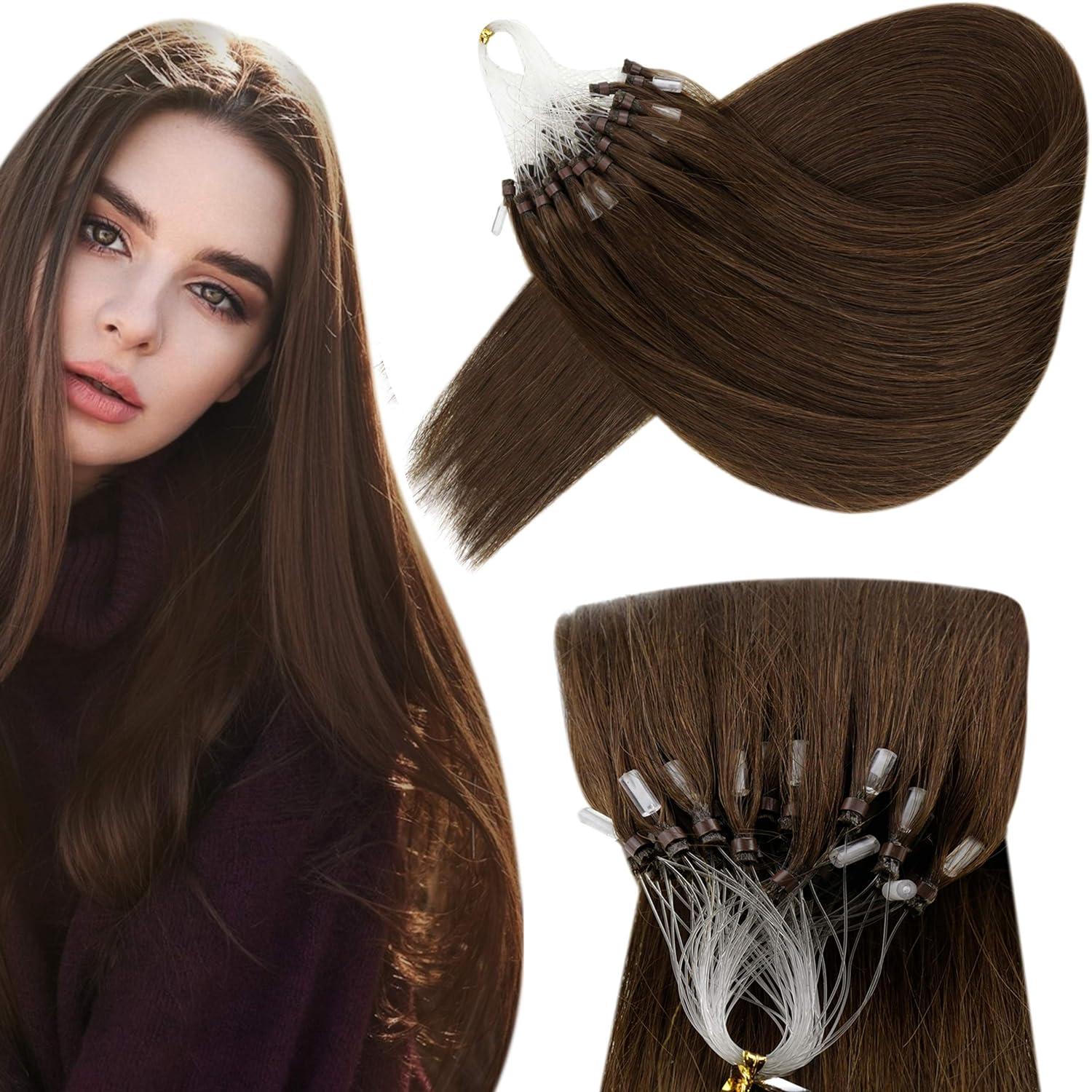These extensions come in wefts that can be clipped into natural hair. They are perfect for special occasions or experimenting with different styles without a long-term commitment. Installation is simple, making them an excellent choice for beginners.
Tape-In Extensions:
Tape-in extensions are semi-permanent and involve adhesive strips that are attached to small sections of natural hair. They lie flat against the scalp, offering a more natural look. Installation and Micro Bead Hair Extensions removal should be done by a professional to avoid damaging natural hair. They typically last for 6-8 weeks with proper care.
Sew-In (Weave) Extensions:
Sew-in extensions are a more permanent option, ideal for those with thick hair. The natural hair is braided into cornrows, and the wefts are sewn into the braids using a needle and thread. This method requires a professional for installation and can last up to 8-10 weeks.
Fusion (Bonded) Extensions:
Fusion extensions involve keratin bonds that are fused to natural hair using a heat tool. This method offers a very natural look and is long-lasting, with extensions staying in place for 3-4 months. However, the process can be time-consuming and should be done by a professional to prevent damage.
Micro-Link (Micro-Bead) Extensions:
Micro-link extensions use tiny beads to attach the extensions to small sections of natural hair. This method does not require heat or glue, making it a less damaging option. However, it requires regular maintenance to reposition the beads as the natural hair grows.
Choosing the Right Hair Extensions
Selecting the right type of hair extensions depends on several factors, including lifestyle, hair type, and budget. Clip-in extensions are ideal for those looking for a temporary change, while tape-in and sew-in extensions offer more durability for daily wear. Fusion and micro-link extensions provide the most natural look but require a higher level of maintenance and professional installation.
Caring for Hair Extensions
Proper care is essential to extend the life of hair extensions and maintain their appearance. Here are some tips for maintaining different types of extensions:
Washing:
Use sulfate-free shampoos and conditioners to prevent drying out the extensions. Wash hair gently and avoid rubbing or tangling the extensions.
Brushing:
Use a wide-tooth comb or a special extension brush to detangle hair. Start from the ends and work your way up to avoid pulling on the extensions.
Styling:
Minimize the use of heat styling tools to prevent damage. When using heat, apply a heat protectant spray to shield the hair.
Sleeping:
Tie hair in a loose braid or ponytail before sleeping to prevent tangling. Consider using a silk pillowcase to reduce friction.
Regular Maintenance:
Schedule regular check-ups with a professional to ensure the extensions are in good condition and to make any necessary adjustments.
Conclusion
Hair extensions offer a versatile solution for enhancing one’s appearance, providing options for temporary or long-term changes. By understanding the different types of extensions and their care requirements, individuals can enjoy beautiful, natural-looking hair that complements their style. Whether for a special event or everyday wear, hair extensions can help achieve the desired look with confidence and ease.
